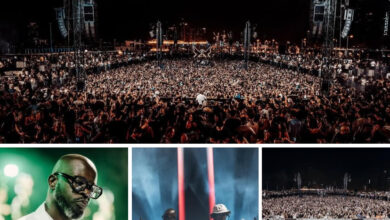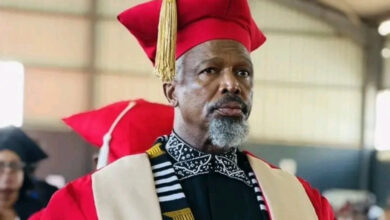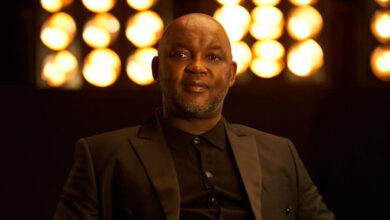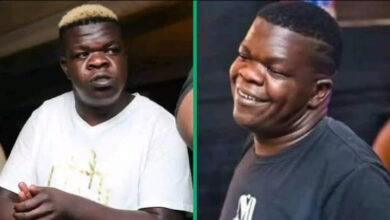50 Things you don’t know about South Africa

1. South Africa, officially the Republic of South Africa, is a country located at the southern tip of Africa
2. South Africa has 2,798 kilometres (1,739 mi) of coastline that stretches along the South Atlantic and Indian oceans
3. South Africa is the 25th-largest country in the world by land area, and with close to 53 million people, is the world’s 24th-most populous nation.
4. South Africa is a multiethnic society encompassing a wide variety of cultures, languages, and religions
5. Its pluralistic makeup is reflected in the constitution’s recognition of 11 official languages, which is among the highest number of any country in the world.
6. About 80 percent of South Africans are of black African ancestry, divided among a variety of ethnic groups speaking different Bantu languages, nine of which have official status
7. South Africa is ranked as an upper-middle income economy by the World Bank, and is considered to be a newly industrialised country
8. South Africa’s economy is the largest and most developed in Africa, and the 28th-largest in the world
9. In terms of purchasing power parity, South Africa has the fifth-highest per capita income in Africa, although poverty and inequality remain widespread, with about a quarter of the population unemployed and living on less than US$1.25 a day
10. South Africa contains some of the oldest archaeological and human fossil sites in the world
11. The area is a UNESCO World Heritage site and has been termed the Cradle of Humankind. The sites include Sterkfontein, which is one of the richest hominin fossil sites in the world
12. The discovery of diamonds in 1867 and gold in 1884 in the interior started the Mineral Revolution and increased economic growth and immigration
13. Queen Elizabeth II was stripped of the title Queen of South Africa, and the last Governor-General, namely Charles Robberts Swart, became State President
14. South Africa held its first universal elections in 1994, which the ANC won by an overwhelming majority. It has been in power ever since. The country rejoined the Commonwealth of Nations.
15. In post-apartheid South Africa, unemployment has been extremely high as the country has struggled with many changes. While many blacks have risen to middle or upper classes, the overall unemployment rate of blacks worsened between 1994 and 2003
16. In a 2006 survey, the South African Migration Project concluded that South Africans are more opposed to immigration than anywhere else in the world
17. South Africa has a generally temperate climate, due in part to being surrounded by the Atlantic and Indian Oceans on three sides, by its location in the climatically milder southern hemisphere and due to the average elevation rising steadily towards the north (towards the equator) and further inland
18. The Free State is particularly flat because it lies centrally on the high plateau. North of the Vaal River, the Highveld becomes better watered and does not experience subtropical extremes of heat. Johannesburg, in the centre of the Highveld, is at 1,740 m (5,709 ft) and receives an annual rainfall of 760 mm (29.9 in). Winters in this region are cold, although snow is rare.
19. The coldest place in South Africa is Sutherland in the western Roggeveld Mountains, where midwinter temperatures can reach as low as −15 °C (5 °F)
20. South Africa signed the Rio Convention on Biological Diversity on 4 June 1994, and became a party to the convention on 2 November 1995. It has subsequently produced a National Biodiversity Strategy and Action Plan, which was received by the convention on 7 June 2006. The country is ranked sixth out of the world’s seventeen megadiverse countries.
21. With more than 20,000 different plants, or about 10% of all the known species of plants on Earth, South Africa is particularly rich in plant diversity
22. The Fynbos biome, which makes up the majority of the area and plant life in the Cape floristic region, one of the six floral kingdoms, is located in a small region of the Western Cape and contains more than 9,000 of those species, making it among the richest regions on earth in terms of plant diversity
23. South Africa has lost a large area of natural habitat in the last four decades, primarily due to overpopulation, sprawling development patterns and deforestation during the nineteenth century.
24. South Africa is one of the worst affected countries in the world when it comes to invasion by alien species with many (e.g. Black Wattle, Port Jackson, Hakea, Lantana and Jacaranda) posing a significant threat to the native biodiversity and the already scarce water resources
25. After each parliamentary election, the National Assembly elects one of its members as President; hence the President serves a term of office the same as that of the Assembly, normally five years. No President may serve more than two terms in office. The President appoints a Deputy President and Ministers, who form the Cabinet which consists of Departments and Ministries. The President and the Cabinet may be removed by the National Assembly by a motion of no confidence.
26. The country’s three branches of government are split over different cities. Cape Town, as the seat of Parliament, is the legislative capital; Pretoria, as the seat of the President and Cabinet, is the administrative capital; and Bloemfontein, as the seat of the Supreme Court of Appeal, is the judicial capital, while the Constitutional Court of South Africa sits in Johannesburg. Most foreign embassies are located in Pretoria
27. Since 2004, the country has had many thousands of popular protests, some violent, making it, according to one academic, the “most protest-rich country in the world
28. In 2008, South Africa placed 5th out of 48 sub-Saharan African countries on the Ibrahim Index of African Governance. South Africa scored well in the categories of Rule of Law, Transparency & Corruption and Participation & Human Rights, but was let down by its relatively poor performance in Safety & Security. In November 2006, South Africa became the first African country to legalise same-sex marriage
29. The private security industry in South Africa is the largest in the world, with nearly 9,000 registered companies and 400,000 registered active private security guards, more than the South African police and army combined
30. As the Union of South Africa, the country was a founding member of the United Nations. The then Prime Minister Jan Smuts wrote the preamble to the United Nations Charter. The country is one of the founding members of the African Union (AU), and has the largest economy of all the members. It is also a founding member of the AU’s New Partnership for Africa’s Development (NEPAD)
31. The country is a member of the Group of 77 and chaired the organisation in 2006. South Africa is also a member of the Southern African Development Community, South Atlantic Peace and Cooperation Zone, Southern African Customs Union, Antarctic Treaty System, World Trade Organization, International Monetary Fund, G20 and G8+5.
32. The SANDF is subdivided into four branches, the South African Army, the South African Air Force, the South African Navy, and the South African Military Health Service. In recent years, the SANDF has become a major peacekeeping force in Africa
33. South Africa is the only African country to have successfully developed nuclear weapons. It became the first country (followed by Ukraine) with nuclear capability to voluntarily renounce and dismantle its programme and in the process signed the Nuclear Non-Proliferation Treaty in 1991
34. The provinces are in turn divided into 52 districts: 8 metropolitan and 44 district municipalities. The district municipalities are further subdivided into 226 local municipalities. The metropolitan municipalities, which govern the largest urban agglomerations, perform the functions of both district and local municipalities.
35. South Africa is a popular tourist destination, and a substantial amount of revenue comes from tourism
36. Several important scientific and technological developments have originated in South Africa. The first human-to-human heart transplant was performed by cardiac surgeon Christiaan Barnard at Groote Schuur Hospital in December 1967, Max Theiler developed a vaccine against Yellow Fever, Allan McLeod Cormack pioneered x-ray Computed tomography, and Aaron Klug developed crystallographic electron microscopy techniques. With the exception of that of Barnard, all of these advancements were recognised with Nobel Prizes. Sydney Brenner won most recently, in 2002, for his pioneering work in molecular biology.
37. South Africa has cultivated a burgeoning astronomy community. It hosts the Southern African Large Telescope, the largest optical telescope in the southern hemisphere. South Africa is currently building the Karoo Array Telescope as a pathfinder for the €1.5 billion Square Kilometer Array project. On 25 May 2012 it was announced that hosting of the Square Kilometer Array Telescope will be split over both the South African and the Australia/New Zealand sites
38. South Africa is a nation of about 52 million people of diverse origins, cultures, languages, and religions
39. South Africa has eleven official languages: Afrikaans, English, Ndebele, Northern Sotho, Sotho, Swazi, Tswana, Tsonga, Venda, Xhosa, and Zulu, and it also have several unofficial languages, including Fanagalo, Khoe, Lobedu, Nama, Northern Ndebele, Phuthi, San, and South African Sign Language
40. Many white South Africans also speak other European languages, such as Portuguese (also spoken by black Angolans and Mozambicans), German, and Greek, while some Asians and Indians in South Africa speak South Asian languages, such as Tamil, Hindi, Gujarati, Urdu, and Telugu. French is spoken in South Africa by migrants from Francophone Africa.
41. The South African Scout Association was one of the first youth organisations to open its doors to youth and adults of all races in South Africa. This happened on 2 July 1977 at a conference known as Quo Vadis
42. South African art includes the oldest art objects in the world, which were discovered in a South African cave, and dated from 75,000 years ago
43. South African literature emerged from a unique social and political history. One of the first well known novels written by a black author in an African language was Solomon Thekiso Plaatje’s Mhudi, written in 1930.
44. Notable white South African authors include Alan Paton, who published the acclaimed novel Cry, the Beloved Country in 1948. Nadine Gordimer became the first South African to be awarded the Nobel Prize for Literature in 1991. Her most famous novel, July’s People, was released in 1981. J.M. Coetzee won the Nobel Prize for Literature, in 2003
45. Although few South African film productions are known outside South Africa itself, many foreign films have been produced about South Africa. Arguably, the most high-profile film portraying South Africa in recent years was District 9. Other notable exceptions are the film Tsotsi, which won the Academy Award for Foreign Language Film at the 78th Academy Awards in 2006 as well as U-Carmen e-Khayelitsha, which won the Golden Bear at the 2005 Berlin International Film Festival.
46. South African cuisine is heavily meat-based and has spawned the distinctively South African social gathering known as a braai, or barbecue. South Africa has also developed into a major wine producer, with some of the best vineyards lying in valleys around Stellenbosch, Franschhoek, Paarl and Barrydale
47. South Africa hosted the 2010 FIFA World Cup, and FIFA president Sepp Blatter awarded South Africa a grade 9 out of 10 for successfully hosting the event
48. South Africa hosted and won the 1995 Rugby World Cup and won the 2007 Rugby World Cup in France. It followed the 1995 Rugby World Cup by hosting the 1996 African Cup of Nations, with the national team going on to win the tournament.
49. There are 23 public universities in South Africa: 11 traditional universities, 6 universities of technology and 6 comprehensive universities.
50. South Africa’s Motto: “!ke e: ǀxarra ǁke” (ǀXam) which is”Unity in Diversity”




